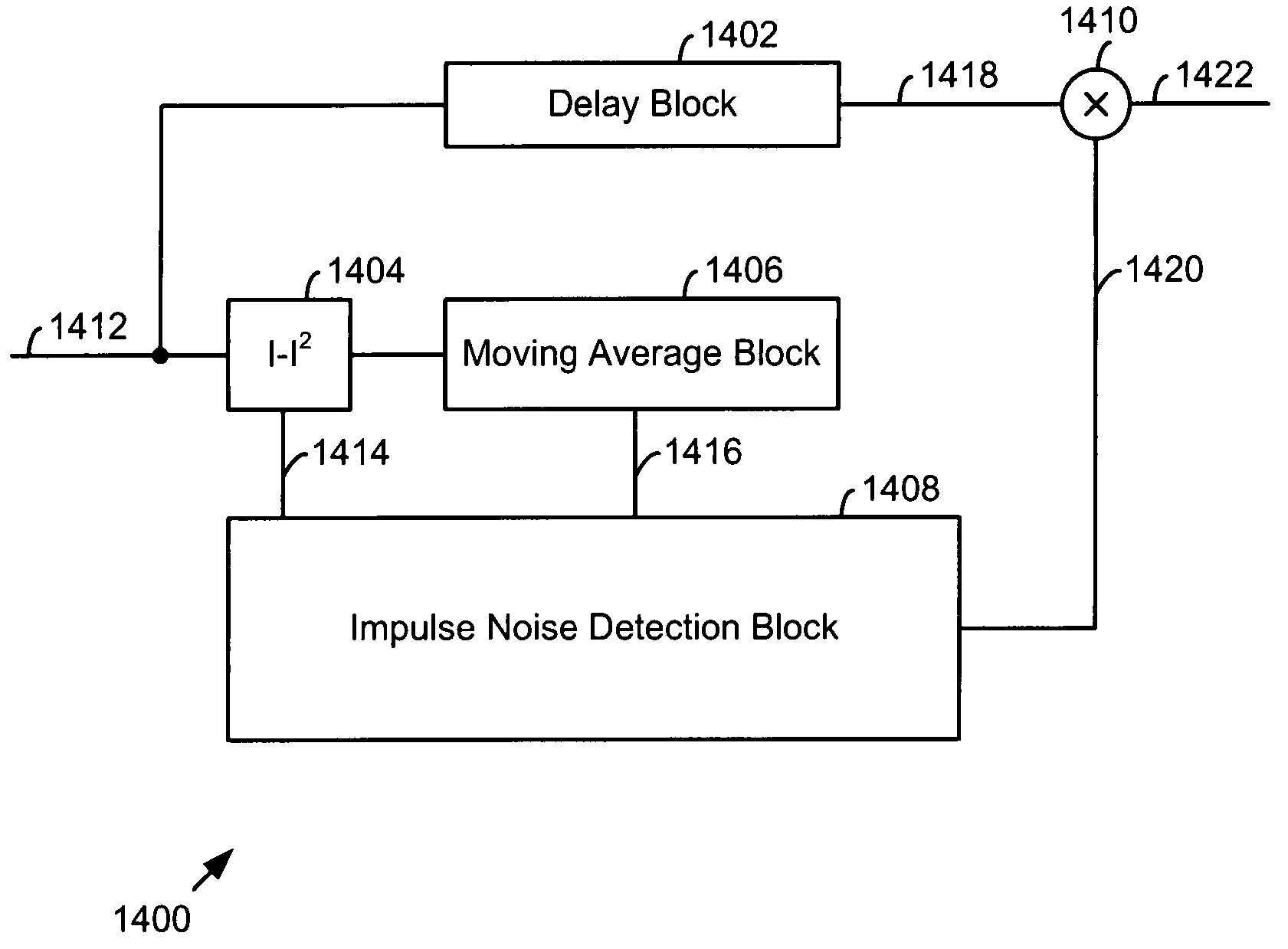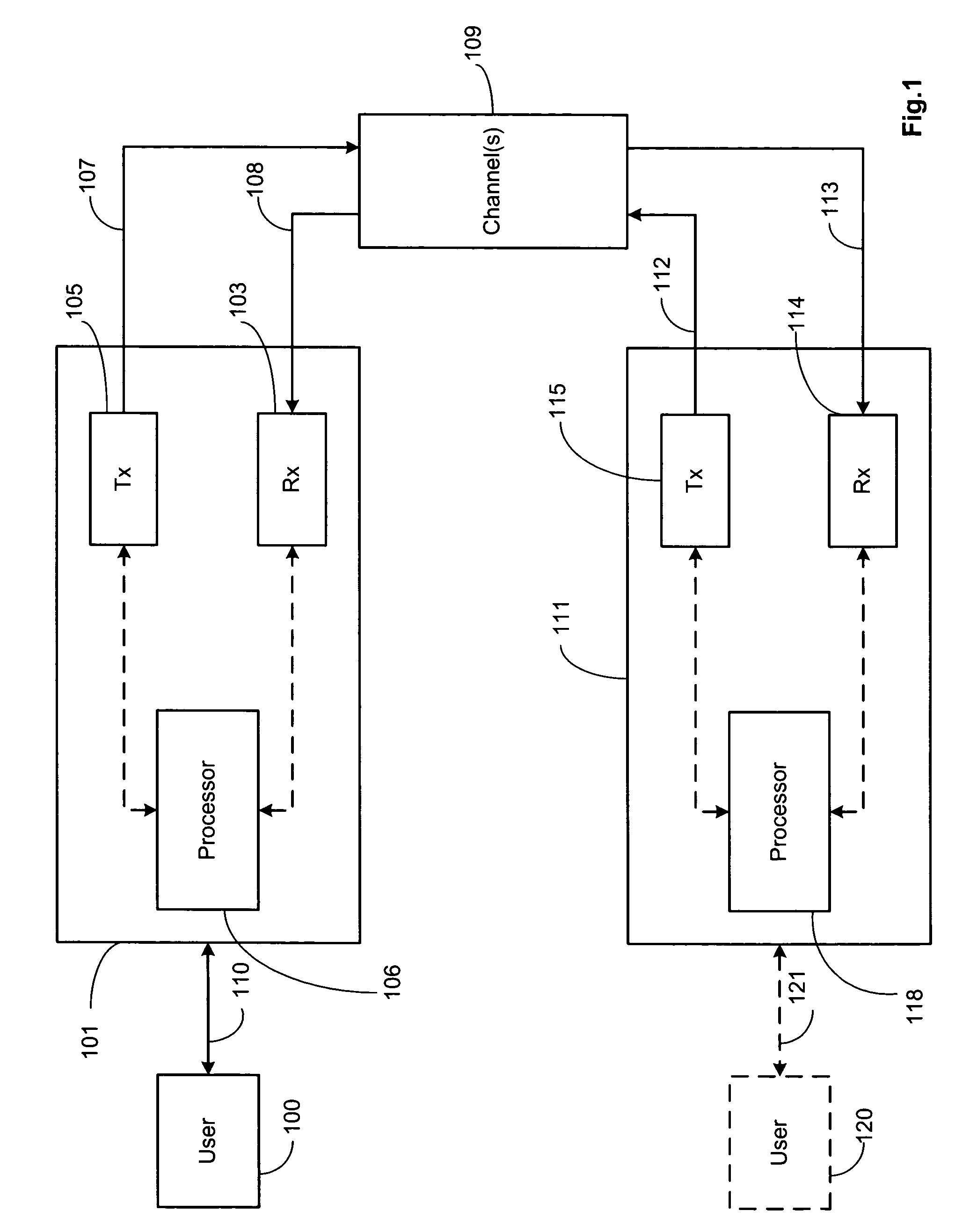Chip blanking and processing in SCDMA to mitigate impulse and burst noise and/or distortion
a technology of scdma and chip blanking, applied in the field of information transfer, to achieve the effect of reducing impairmen
- Summary
- Abstract
- Description
- Claims
- Application Information
AI Technical Summary
Benefits of technology
Problems solved by technology
Method used
Image
Examples
first embodiment
[0118]FIG. 16 is a flow diagram illustrating operation according to the present invention for mitigating impairment in a communication system. As shown in FIG. 16, operation commences in receiving a plurality of chips in a spreading interval (step 1602). Each chip is considered separately in the operation of FIG. 16. As a first operation for each chip in the spreading interval, the signal level of the chip is determined (step 1604). As was previously described, this chip level is determined in one embodiment by magnitude-squaring a measured level of the chip. Because most chips have complex components, and are spread by either a 1 or −1 chip such summation is required so that a valid comparison between the signal level and a threshold and between the signal levels of adjacent chips can be made.
[0119]Operation continues in comparing the signal level of the chip to a first threshold to produce a first comparison result (step 1606). Then, operation continues by determining the composit...
second embodiment
[0123]FIG. 17 is a flow diagram illustrating operation according to the present invention for mitigating impairment in a communication system. The operations of steps 1702 through 1710 correspond to operations of steps 1602 through 1610 of FIG. 16 and are not separately described with reference to FIG. 17. However, additional operations in FIG. 17 include comparing the composite signal level of the plurality of chips of the corresponding chip window to a third threshold to produce a third comparison result (step 1712). Operations further include determining a fourth comparison result based upon the third comparison result of adjacent chips (step 1714). Then, the decision whether to keep or erase the chip is further based upon the fourth comparison result. Thus, the operation at step 1716 includes determining the erasure indication based upon the first comparison result, the second comparison result, and the fourth comparison result. The fourth comparison is based upon the third comp...
PUM
 Login to View More
Login to View More Abstract
Description
Claims
Application Information
 Login to View More
Login to View More - R&D
- Intellectual Property
- Life Sciences
- Materials
- Tech Scout
- Unparalleled Data Quality
- Higher Quality Content
- 60% Fewer Hallucinations
Browse by: Latest US Patents, China's latest patents, Technical Efficacy Thesaurus, Application Domain, Technology Topic, Popular Technical Reports.
© 2025 PatSnap. All rights reserved.Legal|Privacy policy|Modern Slavery Act Transparency Statement|Sitemap|About US| Contact US: help@patsnap.com



